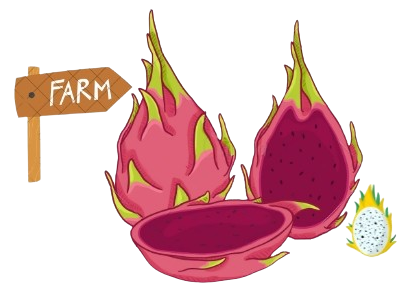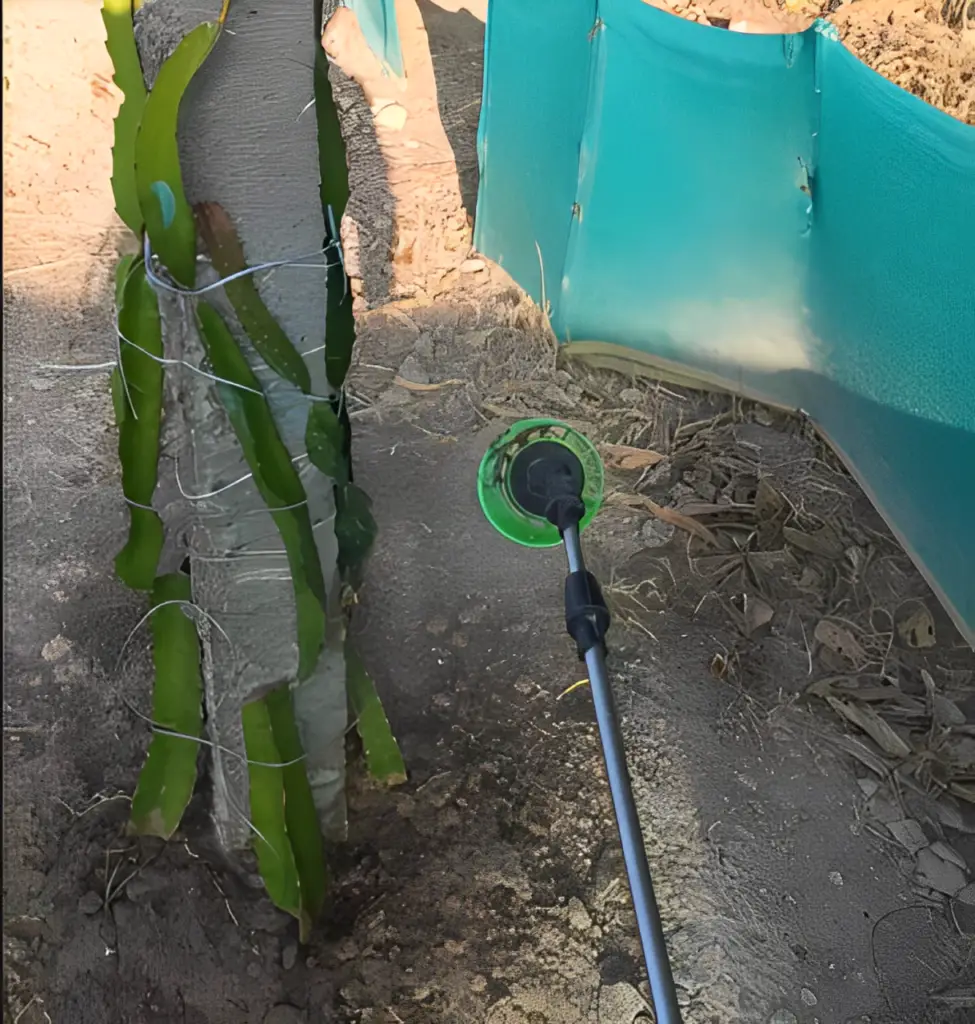Welcome to our blog. Now, if you’ve been in farming for a while or you’re just getting started, you already know this—dragon fruit isn’t your average crop. It demands attention, care, and quite a bit of investment upfront. It’s not something you plant and forget. And trust me, we learned that the hard way. let’s get started with plant growth promoters.
🌱 The Early Days: Big Hopes, Slow Growth
When we first began, we did everything by the book—planted healthy cuttings, ensured proper irrigation, added compost and fertilizers. But after a few months, the plants just sat there. No significant growth, no sign of flowering. We were starting to worry. Sound familiar?
That’s when we realized—water and fertilizer alone aren’t enough for a crop like dragon fruit, especially in a climate like ours where dragon fruit grow. That’s when I started diving deeper into the world of plant growth promoters, regulators, and tonics.
Let me break down what I learned, and more importantly, what actually worked for us.
🌿 What Are plant growth promoters?

Growth promoters are like a multivitamin boost for your plants. They’re natural or synthetic substances that stimulate plant growth—helping with things like root development, cell division, and fruit formation.
In dragon fruit, they can make a world of difference.
Common Types:
- Auxin – Encourages root growth. We saw stronger roots and better nutrient absorption once we started using this.
- Gibberellin – Helps the plant grow taller and promotes flowering. We noticed earlier flowering after using a gibberellin spray.
- Cytokinin – Improves leaf health and branching. Healthy leaves = better photosynthesis = better fruit.
🧪 Pro tip: Always test any new promoter on 1-2 plants first. It’s a golden rule—never go full scale without testing.
you can choose according to the situation like where dragon fruit grow
💡 What We Noticed After Using Growth Promoters
- Plants started growing faster, visibly within 2-3 weeks.
- Flowering came earlier, and fruit size improved.
- Healthier, stronger stems that could handle the weight of the fruits.
And of course, that’s when we started seeing real improvement in fruit yield and price per kilo where dragon fruit grow. In markets where quality matters, bigger, healthier dragon fruits fetch a premium.
🌾 What About Growth Regulators?
While plant growth promoters push growth, regulators help manage it—especially under stress conditions like extreme heat or cold. Think of them as the plant’s stress therapists.
Key players include:
- Abscisic Acid (ABA) – Helps plants survive droughts or nutrient stress. We noticed less wilting and better resilience during a dry spell.
- Ethylene – Controls fruit ripening. Useful when you want to time your harvest or maintain fruit quality.
Again, test before full use. Regulators are powerful tools, but misuse can backfire.
🧴 And Then Come the Tonics…
These are my personal favorite. Tonics are nutrient-rich solutions that boost plant immunity, root health, and overall vigor. I like to call them “plant energizers”.
Here’s what works best for dragon fruit:
1. Micronutrient Tonics
Packed with zinc, boron, manganese, copper, and other essentials. These help balance out minor deficiencies that we might miss with standard fertilizers.
2. Amino Acid Tonics
These are great during flowering and fruiting stages. The amino acids help with protein synthesis, leading to more vibrant and productive plants.
3. Seaweed-Based Tonics (like Sagarika or Bio-Vita)
These are game-changers. Full of natural plant hormones, they promote root development and help plants stay green and healthy. Between Sagarika and Bio-Vita, we found Bio-Vita had better results, but Sagarika is easier on the wallet.
📈 Real Results from the Field
After incorporating these products into our routine (monthly or bi-monthly use), we saw:
- A 40% increase in fruit set.
- Better disease resistance, especially during the monsoon season.
- Less flower drop, thanks to better plant health during the critical stages.
🧡 A Final Word from One Farmer to Another
Dragon fruit farming isn’t just a business—it’s a passion. It takes time, patience, and a little bit of experimentation to understand where dragon fruit grow what works best for your specific climate and soil. I’ve shared what worked for me, hoping it’ll give you a head start and save you some of the trial-and-error we went through.
So the next time your plants feel “stuck” or growth seems slow, don’t worry—it might just be time to give them a little tonic love.
If you’ve got questions or your own tips, I’d love to hear from you. Drop a comment, and let’s grow this community—together.
📚 Frequently Asked Questions (FAQ)
Q1: What tonic should I use for sunburn in dragon fruit plants?
Ans: For sunburn damage, you can use a spray of Green Miracle. It helps the plant recover quickly and repairs leaf tissue affected by the sun.
Q2: What should I use during winter for dragon fruit care?
Ans: During winter, apply a micronutrient-rich tonic along with a balanced fertilizer like 19:19:19. Also, use a fungicide to prevent fungal infections, which are more likely in cold, moist conditions.
Q3: What should be given during the flowering stage?
Ans: During flowering, use NPK consortium bacteria mixed with organic manure. Add amino acids or gibberellic acid to promote better flowering and fruit formation.
Q4: Which tonic brand do you recommend?
Ans: We’ve had good results with both Sagarika (seaweed-based) and Bio-Vita (seaweed + micronutrients). Sagarika is more economical, while Bio-Vita offers slightly better performance in terms of plant response.
Q5: Can I mix plant growth promoters and tonics in one spray?
Ans: Not always. Only mix if the product labels say it’s safe to do so. Otherwise, apply them separately to avoid chemical reactions that may harm the plant or reduce efficacy.
Q6: How often should I apply growth promoters or tonics?
Ans: Generally, apply every 15 to 30 days. During active growth or flowering stages, every 15 days works best. Avoid overuse—more isn’t always better.
Q7: What is the best time of day to spray tonics or growth promoters?
Ans: Spray in the early morning (before 9 AM) or late evening (after 5 PM) to ensure better absorption and to avoid leaf burn from the sun.
Q8: Can I combine organic composts like cow dung or vermicompost with these products?
Ans: Definitely! Using organic manure alongside tonics and promoters enhances soil health and promotes deeper root development.
Q9: How do I know if my plants need a tonic?
Ans: Common signs include slow or stunted growth, yellowing leaves, excessive flower drop, and thin or weak stems. These symptoms indicate the need for an external nutrient boost.
Q10: Should I continue using tonics after flowering begins?
Ans: Yes, but choose fruit-supportive formulas, especially those high in potassium, calcium, and boron, to ensure healthy fruit development and reduce fruit drop.
Q11: Is foliar spray better, or should I do soil drenching?
Ans: Both methods work well. Foliar sprays show quick results, especially for leaf and flower health. Soil drenching targets root health and long-term strength. Alternate between both for best results.
Q12: What safety precautions should I follow while spraying?
Ans: Wear gloves and a mask, especially with chemical products. Avoid spraying during hot sun or rain, and always clean your sprayer thoroughly after use.
Q13: Are there natural alternatives to chemical promoters?
Ans: Yes! You can use organic solutions like Panchagavya, Jeevamrut, fermented plant juice (FPJ), or seaweed extracts. They’re slower but safer and more sustainable.
Q14: Can I use these on young plants or new cuttings?
Ans: Yes, but use diluted solutions—usually half the standard dose. Young plants are sensitive, so it’s important not to overwhelm them.
where dragon fruit grow-if you have any question regarding the same do let me know in the comment section below.


10 thoughts on “Maximize Dragon Fruit Growth with Plant Growth Promoters, Tonics”